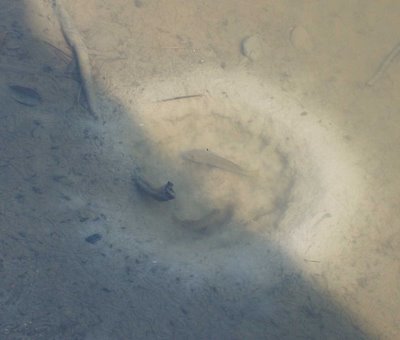To migrate or not to migrate? that is the question!

Chinese Pond-Heron in breeding plumage

Chinese Pond-Heron in non-breeding plumage
(April 25th HTT) An Oriental Magpie-Robin seen building a nest in a hole in tree. From the size of the hole I would guess that it was dug out originally by a Lineated Barbet.
A lonely Barn swallow seen sitting on the telephone wires and at the same time, just above our heads, a Rufous-winged Buzzard was circling with a foot-long snake dangling from its beak. A Red-wattled Lapwing was diving on it and at the same time screaming a repetitive ‘did-he-do-it - did-he-do-it’, hardly a dull moment!
Just one Chinese Pond-Heron seen this morning and it hadn’t even started to change its plumage. My feeling is that the change of plumage triggers off the urge to migrate, I have come across the odd pond-heron during the summer and they have always been in non-breeding plumage. It could of course be the other way round, it doesn’t have the urge to migrate so doesn’t change plumage, was that confusing?
Migrant birds not there: The Stonechats all seem to have disappeared, haven’t seen one for the last five days. There used to be 6-7 perching in the rice stubble or low bushes. Haven’t seen a Red-throated Flycatcher for the same length of time and also the Dusky Warbler. This report only applies to Huay Tung Tao where I’m concentrating my efforts.
(April 26th HTT) It was certainly cooler this morning, we had a storm last night and a little rain this morning. I take it back about there being no Dusky Warblers, one was seen at the lakeside ‘tick-tick-ticking’ merrily away, that’s how I got onto it.
A Puff-throated Babbler came to my ‘we miss you’ call, doesn’t very often do that, and that’s why I don’t very often see it – I hear it all the time. It has three ways of expressing itself, the above call, a chuckling and churring call and an out of tune meandering whistle. The solitary Chinese Pond-Heron is still hanging about, I wonder if it gets lonely on its own? As a matter of interest the latest figure of birds documented for Thailand is 995 species, quite a jump from the 962 species I have been working on. Also interesting is that I have documented around a quarter of those for Huay Tung Tao.
(April 27th HTT) Another short-lived storm this morning, ended at 6am but after, the sky was clear, clean and the air air crispy cool for a while, by 0940 the temperature was 35c.
The Plain-backed Sparrows are hard at work building their nest in that hole in the tree. Now they are using more conventional material, straw and grass.
I have found a nice wooded area behind a campsite and this is where I came across the Yellow-bellied Warbler for the first time, I saw it again today along with a male Asian Paradise Flycatcher, a female Black-naped Monarch, a flock of White-browed Laughingthrushes, 5 male Tickell’s Blue Flycatchers all with their own territories, a male Shikra and a Greater Racket-tailed Drongo that was imitating 4 or 5 different birds. I sat there on the ground just listening and watching, quite a treat.
A Cinnamon Bittern was seen stalking fish. Most of the time its body was stretched forward and level with the water, it was high-stepping carefully through the water and then a sudden stab and it had an inch-long fish in its bill.
+John.jpg)









